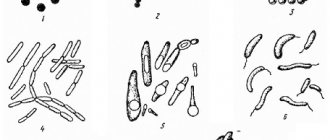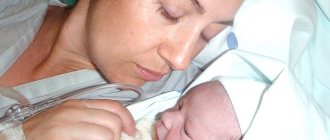Your pregnancy is over and your baby is born. You are overcome with indescribable joy. Having rested from childbirth, you will be able to hold your little happiness in your arms. Now a new stage has begun for both of you, associated not only with joy, but also with some questions. First of all, Young mothers are concerned with questions about how to do it correctly, how often, whether it is necessary to express after each feeding, and so on.
No one today will dispute the importance of this process. irreplaceable by anything. Its value is difficult to overestimate. However, not everyone manages to establish this method of feeding. Why is this happening?
It is very important to try to put your baby to the breast immediately after birth. In the future, the mother must ensure that the baby is not supplemented with formula. Otherwise, he may refuse to breastfeed in the future. Should I pump after feeding? This question worries many. There are a number of indications for this. But some experts consider this unnecessary.
To begin with, I would like to note that after feeding you need to squeeze out a drop of milk and treat the nipple with it. This way you will protect yourself from cracks and infection. Whether you need to express after each feeding is up to you. But remember that it is not recommended for a nursing mother to wash her breasts in the usual way. Various gels, soaps, and so on should be excluded. Ordinary clean water is quite enough.
The breast should smell like milk, and the strong smells of hygiene products can scare the baby away. Thus, milk remains the only protection for the breast. In this case, pumping is justified and very useful.
Do I need to express in large quantities after each feeding? Some mothers try to empty their breasts every time of all the milk that is in it. Is this really necessary? Initially, the body cannot know how much milk the baby will need. Therefore, initially there is quite a lot of it. Naturally, a newborn is not able to eat it all. If you see that the baby is eating well and gaining weight well, then it becomes clear that he does not need more milk. By pumping, you give a signal to your body that there is not enough food. Thus, you provoke additional milk production, which is completely undesirable. Answering the question “is it necessary to express after feeding?” we can say no.
When you really need it:
- The baby cannot breastfeed. He may be weak, premature, or sick. In this case, to prevent the milk from disappearing, the mother will have to express herself.
- The mother feels unwell or is not yet ready to breastfeed due to the operation.
- If there is a blockage of the milk duct. When examining the breast, painful lumps and lumps are revealed. This can be very dangerous for a woman's health. In this case, the question “should I express after each feeding” should not arise. This must be done along with In this case, the medical staff of the maternity hospital where you are should help you.
- Mom needs to leave for a long time.
So, whether you need to express after each feeding is, of course, up to you to decide. However, experts do not recommend doing this without special reasons.
After each feeding, be sure to express. This recommendation was given to all young mothers just a few years ago. Why express milk after feeding?
Before feeding
Do I need to express milk before feeding? If someone tells you that before putting your baby to your breast, you need to express at least a few drops of milk, which has turned sour in your breasts between feedings, do not believe it. This is absolutely not true! Have you ever seen a cow being milked with kefir? It’s the same with a woman: her breasts are an ideal place to store tasty and healthy food for the baby.
There is another misconception about pumping: you need to get rid of the liquid foremilk, otherwise the baby will not be satisfied during feeding. Why express milk, which provides fluid for the baby, and then solve the problem with a bottle of water?
Cases when expressing is necessary
In a number of situations, expressing breast milk is encouraged:
- the child was born prematurely and is forced to be bottle-fed;
- a woman has a lot of milk, which leads to blockage of the milk ducts and prevents the baby from suckling;
- the amount of milk is not enough for the baby (this should be confirmed by low weight, increased restlessness and a decrease in the number of wet diapers during the day);
- the mother requires treatment with potent drugs or long-term separation from the baby.
If you have doubts about the need to empty your breasts, you should consult your doctor. The specialist will assess the current circumstances and give the woman individual recommendations.
Video about hand expressing milk
There are situations when you really need to express breast milk. However, they occur infrequently. In most situations, women resort to this method without justified reasons. You should not listen to friends who recommend pumping after every feeding or follow the experience of grandmothers who emptied their breasts to the last drop. Nature intended the natural establishment of lactation without any pumping.
After feeding
- there is still too much milk left in the breast, stagnation of which will lead to lactostasis;
- A woman has hypogalactia: the mother needs to stimulate milk production.
Is it necessary to express milk after feeding if there are no such problems? Most likely, this will be unnecessary, because the more it “comes out” of the breast, the more it “comes” later, and the baby must regulate this process himself so that the mother’s body adapts to his needs.
There is an opinion that milk protects against infections: express a couple of drops and lubricate the nipple and areola with them. This measure will also prevent the appearance of cracks.
Insufficient lactation
The baby started eating well both in time (at least 20 minutes) and in frequency (every 2 hours), but there was no weight gain. This may be a situation in which frequent full pumping (more than 4 times a day) is necessary to stimulate adequate lactation.
The first thing you need to pay attention to is how completely the baby grasps the areola of the nipple when the baby eats on his own, and help him when necessary.
In the future, pumping 5-6 times a day may be recommended, but consultation with a specialist regarding this amount is necessary so that there are no more pumps than is really necessary. Only a specialist can tell you exactly how many times you need to pump your breasts.
It is possible to solve this issue without pumping, for which they try to feed the baby much more often - once every hour and a half, with the baby applied to both breasts during one feeding. In a large number of cases, such measures will be enough for lactation to normalize in 3 days.
If sufficient lactation has been restored, but the baby’s weight is still below normal, supplemental feeding is necessary. Even if its need is obvious, entrust the choice of formula and the amount of supplementary feeding to a doctor or a specialist in feeding newborns.
In what cases is it necessary to express milk:
- If it is not possible to breastfeed your baby
. For example, babies born by caesarean section are not immediately placed on the mother’s breast because the woman has undergone surgery and is not feeling well. But colostrum is so necessary! Decant these droplets and give them to the baby from a spoon. - If there is a strong flow of milk
. Even in the maternity hospital, on the second or third day, the young mother notices how her breasts swell and become “stone-like.” Should I express milk after feeding and before it in this case? Of course, this way you can regulate lactation yourself. In the first days of life, the baby cannot suckle for a long time, he simply gets tired of it, so after feeding, excess milk remains in the chest, which will cause lactostasis. The need for preliminary pumping is explained in a similar way: it is simply difficult for a baby to dissolve a swollen breast on its own. - If the mother is ill
and, as prescribed by the doctor, takes medications that cannot be combined with breastfeeding, it is recommended to regularly express milk completely so that lactation is not interrupted and breastfeeding can be continued after stopping the medications. There is such a device - a breast pump. Why is it needed in the maternity hospital? Just to get rid of “hard” breasts. It is very difficult to remove the seals by hand, especially for a mother who is inexperienced in this matter. The device will cope with the task with 5 points! - If pain occurs
. Even with established lactation, sometimes a problem such as blockage of the milk duct appears. A lump forms in part of the breast, causing pain. In such a situation, you need to express breast milk until the problem area is completely softened. - If the mother is not able to regularly breastfeed the baby
. For example, you need to go to work or go away on business. Grandmothers or a nanny come to sit with the baby. What to feed your toddler? Express your milk into a bottle from which your baby will eat.
Now you know why you need to express milk after feeding. It is not necessary to do this after each baby’s application to the breast, but using this method of regulating lactation at the right time is correct and useful.
Necessity is one of the most controversial issues today. On the one hand, the young mother will have to listen to a whole lecture from the “wise generation” about what will happen if she does not pump. These are terrifying stories about lactostasis, mastitis and other less pleasant problems. The second point of view, by the way, modern doctors adhere to this position, says that it is necessary to express milk after feeding only in some situations, and in no case should you do this all the time.
So, let's try to figure out whether it is necessary to express milk after each feeding.
Pumping after feeding - when is it necessary?
The more milk a nursing mother expresses, the more milk comes. This statement has been repeatedly proven by scientific research and confirmed by the practice of more than one generation. In this case, it is quite logical to assume that pumping after each feeding is not only a waste of time and effort, but also a kind of vicious circle that does not solve the problem at all, but, on the contrary, creates new ones.
In other words, if the baby is active and healthy, eats with appetite and receives mother’s milk on demand, there is no question of whether it is necessary to express after each feeding. But, there are situations when a nursing mother cannot do without pumping. So, you need to express milk after feeding.
The questions “should I express the breast milk remaining after feeding or not,” “how to do it,” “how to properly store milk that has already been expressed” usually arise for most young women.
Should I express the remaining milk after feeding?
Alas, these days the myth that it is necessary to express the remaining milk after feeding is still relevant among young mothers. But constant pumping after feeding the baby led to the woman’s fatigue from feeding, which is why many mothers stopped breastfeeding their baby before three months. Fortunately, over the past ten years, breastfeeding practices have begun to take into account the needs of the baby. Gone are the artificially maintained time intervals between feedings, which tormented both the child and the mother. A newborn baby has the right to breastfeed as much as he wants. Feeding at the baby's request is one of the most important factors that maintain lactation at the proper level.
Breastfeeding is a natural process that does not require artificial intervention.
If the mother feeds the baby on demand, then there is no need to express the remaining milk after feeding!
After childbirth, milk may arrive in large quantities, and then after feeding the young mother may feel that the breasts are not “free” enough. But in fact, very soon, the mother will have exactly as much milk in her breast as the baby needs in specific situations. In the first weeks, you need to breastfeed your baby every hour and a half. Until the first month, it is advisable that daytime breaks should not be longer than 2 hours between feedings.
If a woman begins to constantly express her breasts after feeding, then she disrupts the natural lactation process. This may cause:
- excess breast milk;
- lumps in the chest;
- changes in the balance of foremilk and hindmilk,
- irritation and fatigue from the feeding process.
In addition, constant pumping after feeding can lead to a nursing mother’s psychological dependence on pumping. In fact, with regular pumping, it is often quite difficult to force yourself to stop expressing the remaining milk after feeding your baby. If a young mother constantly pumped the remaining milk after feeding, and suddenly realized the uselessness and harm of pumping, then it is undesirable to suddenly stop doing this. It takes time to gradually move away from pumping. This usually takes a week or two. First, reducing the duration of pumping, and then eliminating some pumping.
Now let's look at those cases when pumping is really necessary:
- If the flow of milk is painful, accompanied by swelling of the areola and nipple (usually occurs in the first time after childbirth);
- If a young mother is treating breast lumps (lactostasis) or mastitis;
- If the mother needs to leave the child temporarily or permanently;
- If you are separated from your child in a maternity hospital, hospital, or when the mother is hospitalized;
- If the baby does not take the breast (refuses to breastfeed);
- Emergency weaning of the baby;
- If there is discomfort in the chest or an active flow of breast milk, doctors may recommend pumping the breast before feeding;
- Pumping can be compared to an additional mechanism for increasing lactation in case of a serious lack of milk.
Painful milk flow during the first time after childbirth is a fairly common problem. This condition is mainly characterized by unpleasant sensations, chest pain, and a fever may rise. In this case, the breasts may be hot, swollen, and milk production may be very poor. Alas, in such situations, forceful pumping by midwives is quite often practiced in maternity wards.
Such “pumping” in maternity hospitals is a rather painful procedure, when midwives pump the breasts in a rather aggressive and rough manner. Because of this, many women these days associate the word “pumping” with very severe pain.
Unfortunately, many young women have formed the opinion that breastfeeding is torment, suffering and pain, and only by forceful pumping can stagnation of milk and mastitis be prevented.
Such forceful straining is unacceptable! As a result of such straining, not only the ducts of the mammary glands can be injured, but tissue swelling can also appear.
Decantation must be performed with careful, almost painless, soft movements. Under no circumstances should you put forceful pressure on the delicate breast tissue. Expressing should always start from the nipple, and not from the top of the gland. It is very important that a woman expressing her breasts feels the breast tissue with her fingers and can find the ducts, understanding where the tissue is swollen and where the glands are full.
In addition, pumping during a painful milk flow is often just the beginning. By slightly softening the area around the nipple areola, we help the baby to latch onto the breast correctly, thanks to which the problem with milk stagnation is solved quite quickly. Most often, no other decanting sessions are required, since the most effective assistant for the mother will be her child.
I would like to believe that such a cruel custom as forceful decantation will very soon completely become a thing of the past.
The main condition for the treatment of breast compaction (lactostasis) and mastitis is to establish the outflow of breast milk, or rather to improve the drainage of the glands. Pumping can help in such a situation, although the main assistant is still the child.
If there are lumps in the breasts, you should pay attention to the fact that you need to express your breasts as much as possible before breastfeeding, and not after!
To do this, you should not express all the milk before feeding; you can express only the milk that flows easily. Then we properly feed the baby, who will finish what the mother was unable to express. Thus, newly formed lactostasis will go away quite quickly. When everything returns to normal, you can stop pumping.
Well, if you see that after pumping and latching the baby, relief and softening of the breast does not come, you need to urgently call a pumping specialist for help.
Is breast pumping necessary or not?
About 25-30 years ago, expressing milk after breastfeeding was considered mandatory in Russia, and nurses in maternity hospitals told how to properly express after breastfeeding. Nowadays the situation has completely changed.
According to the rules for successful breastfeeding, published by experts from the World Health Organization, there is no need to express milk after each breastfeeding if the baby is accustomed to feeding on demand.
In the absence of a strict regimen, is it necessary to express milk after feeding a newborn to produce more milk? The amount of milk in the breast is regulated by the action of the hormones responsible for lactation - prolactin and oxytocin. During manual expression of the mammary glands, a signal is sent through the nerve endings to the brain center, and the body produces a new portion of breast milk, sufficient to feed the baby.
Why do pediatricians recommend special hand expression of milk? Sometimes the processes of milk production in the female body can malfunction, so every young mother should be able to do this. This need may arise in the following cases:
- To maintain lactation during forced separation of mother and baby. If a nursing woman needs to go to work, or someone is in the hospital, she should express milk 6-10 times a day to maintain regular milk production.
- To make supplies for the time of your absence. Since breast milk can be refrigerated and even frozen, extra pumping can help stimulate your baby's production of additional healthy nutrition.
- To prevent mastitis.
If too much milk is produced, and the baby drinks only a small part, stagnation appears in the breast. This phenomenon often occurs during the initial development of lactation. Excess fluid in the mammary glands can cause unpleasant painful sensations and provoke a serious illness. To avoid its development, you should express the excess after feeding, if the breast hurts and seems very heavy, hard, and stone formations appear. But at the same time, you cannot express completely - this can provoke hyperlactation. - To avoid lactostasis. Sometimes during feeding, the breast ducts can become clogged with a clot of milk or fat. If the baby does not suck it, you should strain the breast yourself.
- If a woman has taken medications that are dangerous to the child, consumed food high in allergens or alcoholic beverages. Pumping will save the baby from getting unwanted substances into his body through breast milk.
- When a newborn does not gain weight well. Insufficient weight gain may mean a lack of milk, and regular breast pumping after feeding will help increase your milk supply.
Cons of the procedure
Removing excess breast milk after each feeding can harm the baby and the nursing mother. The fact is that when the breasts are emptied, a young mother removes “hind” milk from her, which is the most healthy, fatty and nutritious. It contains a lot of the lactase enzyme for breaking down lactose.
If the baby feeds only “foremilk”, less nutrients will enter his body. As a result, lactose deficiency may develop, problems with stool, pain and fermentation in the abdomen may occur.
In addition, a large number of pumping stimulates increased milk production. To get rid of heaviness in the mammary glands, a woman will have to pump even more often. To avoid such a problem, pumping standards should be followed.
Still have questions?
The free Helpline for nursing mothers will answer all your questions by calling the following phone number:
24/7 emergency assistance at home:
There is a myth that expressing milk
It is necessary strictly after each feeding, so that there is no stagnation of milk and it comes in better. This statement is partly true, but only in some special cases. To find out in what cases pumping may be required, let’s remember how lactation develops.
What is lactation
As is known, in the first two to three days after birth, the mother’s mammary gland produces colostrum - a very special type of milk, fundamentally different in composition from mature milk and containing a high concentration of proteins, microelements and fat-soluble vitamins with a relative poverty of carbohydrates and fats. Colostrum is released in a very small volume, usually not exceeding 20-30 ml per feeding by the third day after birth. This volume corresponds to the needs of a child aged 2-3 days. These days, the mother does not yet have a feeling of fullness in her breasts, her breasts are soft. The baby, if he is properly attached to the breast and sucks effectively, completely empties the gland. However, the process of colostrum production does not stop for a minute, and if you press on the nipple a few minutes after feeding has ended, a few drops of colostrum will be released from it.
lactation begins
: The mammary glands stop secreting colostrum, which is replaced by transitional milk. It is less rich in proteins, but contains more carbohydrates and fats, thus approaching the composition of mature milk. The beginning of the secretion of transitional milk coincides in time with the so-called tide. This moment is felt as a feeling of fullness, sometimes as a tingling sensation in the mammary glands. From this moment on, the glands work at full capacity, providing the baby’s growing nutritional needs day by day.
Let us remind you once again that a young mother needs to limit fluid intake to 800 ml when milk arrives, so as not to provoke its production in excessive quantities, which is a predisposing factor for the development of lactostasis (milk stagnation).
What determines the amount of milk?
As already mentioned, milk is produced in the mammary gland constantly, accumulating in the required volume for the next feeding. If a child begins to suckle, feeling hungry, sucks actively and correctly, then by the time he is full, the breast is almost completely empty. In this case, there is no need to express milk
. There is a close feedback between feeding and the central (coming from the brain) regulation of lactation, which is manifested in the fact that the more milk the baby sucks from the breast, the more milk is produced for the next feeding.
If the baby sucks inactively or ineffectively, incorrectly, without emptying the gland, then the brain receives signals that more milk is being produced than the baby needs, and less milk will be released at the next feeding. Thus, the best prevention of both hypogalactia (reduced milk supply) and lactostasis is correct and regular attachment of the baby to the breast and effective sucking.
Of particular importance at the stage of lactation
has a free mode of breastfeeding, feeding on demand. This feeding regimen, on the one hand, stimulates the production of more milk when there is still not enough milk, on the other hand, it allows the child to completely empty the gland, preventing stagnation in it.
Stage of lactation
lasts about 2-3 weeks and ends by the end of the first month of the child’s life. At this point, the gland produces fully mature milk. The feeding rhythm is usually established. The child requires the breast in his own individual mode, but for each baby, if this mode is set up correctly, the frequency of feedings is more or less rhythmic. On average, a child aged 1-2 months needs to be fed every 3 hours (±30 minutes), including at night. Accordingly, the mother’s mammary gland and the centers that regulate its work adapt to this feeding rhythm. If the baby needs more milk, he suckles more actively or requires the next feeding earlier, which serves as a signal for more milk production.
When to express milk
At the stage of colostrum production, if for some reason the baby does not attach to the breast, it is necessary to express the colostrum
so that the brain receives signals about the emptying of the mammary gland and stimulates its constant work. Also, at this stage, it is necessary to develop the milk ducts, so that by the time the baby is able to suckle, the gland is ready to “give” milk.
At the stage of lactation
the need to
express milk
occurs when the intensity of milk production by the gland exceeds the child’s nutritional needs, when he does not empty the breast completely (normally, after feeding, the mammary gland is soft, without areas of engorgement).
Areas of lactostasis
are defined as engorgement of the mammary gland, painful to the touch.
With such phenomena, it is necessary to express milk
, because after stagnation of milk, inflammation of the mammary gland develops - mastitis.
How to use a breast pump
For expressing milk
You can use a variety of mechanical breast pumps. The operating principle of all breast pumps is based on creating a vacuum in its cavities, as a result of which milk flows from the milk passages into the reservoirs. But it should still be said that no matter how perfect breast pumps are, at the stage of lactation it is better to develop the breasts with your hands. The use of breast pumps is justified in cases where there is a lot of milk and the breast is already well pumped, when there are no problems with the nipple. This is also convenient because the entire structure is sealed, and if you sterilized it before use, then as a result of pumping you get sterile milk, which can be stored in the same “container” in which it came during the pumping process (in a bottle or a special bag) .
The need to express milk
occurs in cases when the mother is forced to leave home and she needs to create a supply of milk,
Ideally, when a baby is fed on demand, he can and should draw from the breast as much milk as the breast produces. If the gland's milk production exceeds the child's needs at this age, the brain receives signals that excess milk is being produced, and the gland begins to produce less milk.
When the formation of lactation is completed, the need to express milk
occurs in cases where the mother is forced to leave home and she needs to create a supply of milk to feed the baby in her absence.
How to express milk correctly
First of all, it should be said that the process of expressing milk
In no case should it be traumatic for the chest. All efforts should be moderate. The effectiveness of pumping depends on the correctness of the actions, and not on the force applied by the hands. It is not uncommon to see the breasts of a woman who has recently given birth, all covered with bruises as a result of improper pumping.
Before you start expressing milk
you need to warm up your breasts by gently massaging them with your palms in front, behind and on both sides from top to bottom.
Then you should grab the gland with both hands so that the thumbs of both hands are located on the upper surface of the chest (above the nipple), and all other fingers are on the lower surface (under the nipple). During the period of milk flow, the nipple often swells, and this interferes not only with pumping, but also with feeding. To reduce swelling, you need to carefully and carefully express the contents of the milk ducts located in the nipple for several minutes at the beginning of feeding or pumping. Direct the movements of the fingers - thumb and index - of both hands from top to bottom and from the surface of the nipple - into its thickness. At first, the movements should be very superficial, but gradually, as the outflow of milk improves, the degree of pressure should be increased. If you do everything correctly, you will feel how the nipple becomes more and more soft and pliable, and the milk is expressed
first in rare drops, and then in thin streams. The appearance of streams of milk coincides with a decrease in nipple swelling.
After this you can start expressing milk.
(or to feeding).
It should be remembered that the milk ducts pass in that part of the gland that is located on the border of the areola (peripapillary pigmentation), above the nipple. It is to this zone that the forward movements of the fingers need to be directed. The movements should be the same as when expressing milk from the milk ducts of the nipple, only now not two fingers of both hands, but all five should be involved in the work. The gland should rest, as it were, in the palms, located between the thumbs and all other fingers, while the main force (but moderate!) should come from the thumbs, and all the rest should support the gland, lightly pressing from top to bottom and from back to front. Thus, milk
is expressed until the streams of milk begin to dry up. Next, you should slightly change the direction of the movements of the fingers in order to influence other lobes of the gland. To do this, you need to change the position of your fingers, placing them so that one hand is below and the other is on top. Moreover, if the left breast is being expressed, then the thumbs of both hands are located on the inside of the chest, the other four - on the outside. If the right breast is expressed, then the thumbs of both hands are on the outside of it, and the other four are on the inside. Finger movements should be made in the direction from the periphery to the nipple with light pressure deep into the gland. You need to stop expressing after the milk stops flowing in streams.
You may be interested in articles
Excess milk
The mother feeds, the baby eats with pleasure, but there is so much milk that the baby is unable to latch onto the breast; in this situation, pumping is necessary not after, but before feeding.
To feel slight relief, you will need to express a little right before putting your baby to the breast, and apply it as often as possible.
If the temperature has risen and the situation threatens the development of lactostasis, you need to either express more before feeding, or express milk once a day until there is significant relief.
How many times should you pump if there is an excessive supply of milk on the first day of the flow and the threat of developing lactostasis? The number of pumping sessions can be increased to 2-3, after which you should feel relief.
For easy milk release and to prevent lactostasis, perform the pumping procedure under a warm shower or after applying a towel soaked in warm water to the breast. After the procedure, feed the baby. There is no need to knead the seals inside the breast tissue with your fingers so as not to injure them; they are now swollen and therefore more fragile.
You can massage yourself with gentle movements with your hand from the base of your chest to the top. Simply move over compacted areas without pressing on them. Before pumping, tilt your torso, shake your breasts gently to relax the milk ducts, and then be sure to feed.
If you have to pump more than 3 times a day to prevent lactostasis, contact a lactation consultant to decide how many pumps per day will be optimal for you. A large number of pumping only increases the flow of milk, which means it increases the risk of fever and lactostasis.
Hyperlactation is unpleasant and dangerous not only for the mother, it is also harmful to the baby. Receiving too much foremilk causes tummy colic and restlessness in the baby.
About freezing, preservation in and outside the refrigerator
It is important to know how long a product can be stored under different circumstances. So, if the question arises that it is necessary to ensure safety outside the refrigerator, then the duration of storage is about 3-4 hours. There is an opinion that you can store the same milk outside the refrigerator for up to 6 hours, but its properties may change significantly, which must be kept in mind.
It is recommended to store breast milk in the main compartment of the refrigerator - this is the best place for this product, which alone can ensure its preservation for 6-7 days. It is believed that the cooled secretion is freer of bacterial flora than the same milk obtained after recent expression.
Another option is the freezer. It is worth keeping in mind that the same milk can only be frozen once. It is normal for it to have a flaky appearance after defrosting. Another thing is that you cannot re-freeze the same milk. The same milk, without defrosting, can be preserved for up to six months or more, which is a very long time. The question of how much, how and when to express is necessary for each woman to decide for herself individually. In this case, it is worth taking into account not only the needs of the child, but also your own comfort, since without a woman’s psychological comfort, even breastfeeding is not so useful. If you have doubts about the correctness of your actions, you can always consult a specialist. A specialist will help you competently and fully resolve complex issues, taking into account both the condition of the mother and the condition of the child.
The issue of pumping is still very controversial, and this is what explains a woman’s freedom of choice in a rather difficult matter. It is recommended to listen not only to the advice of others, but also to your own body.








